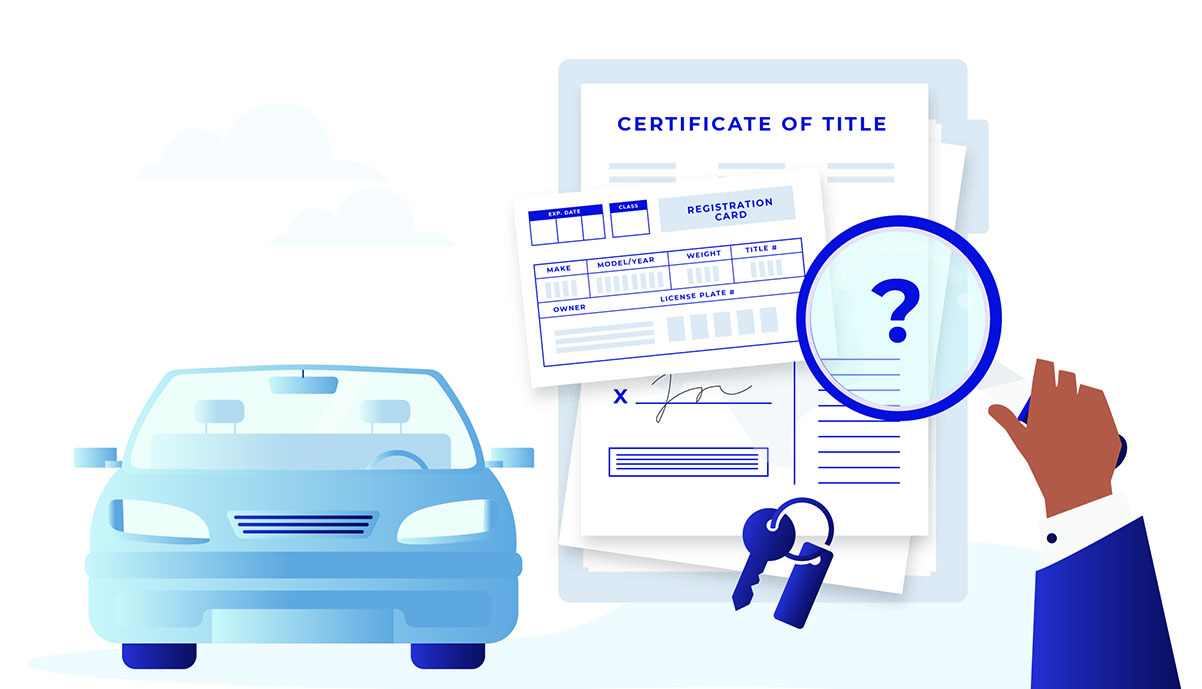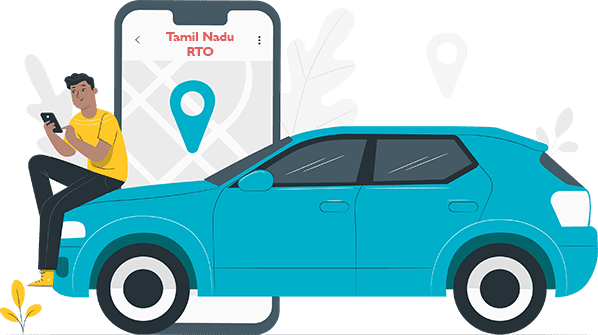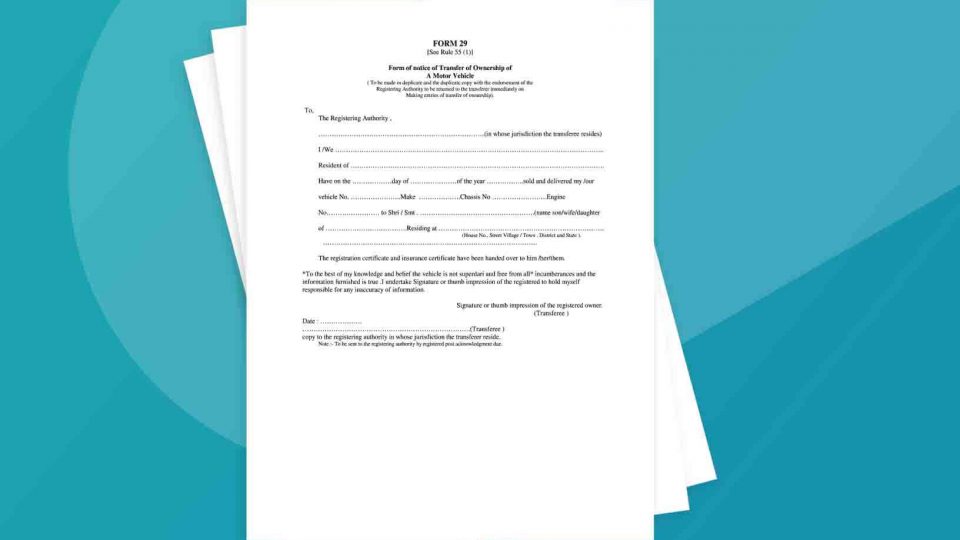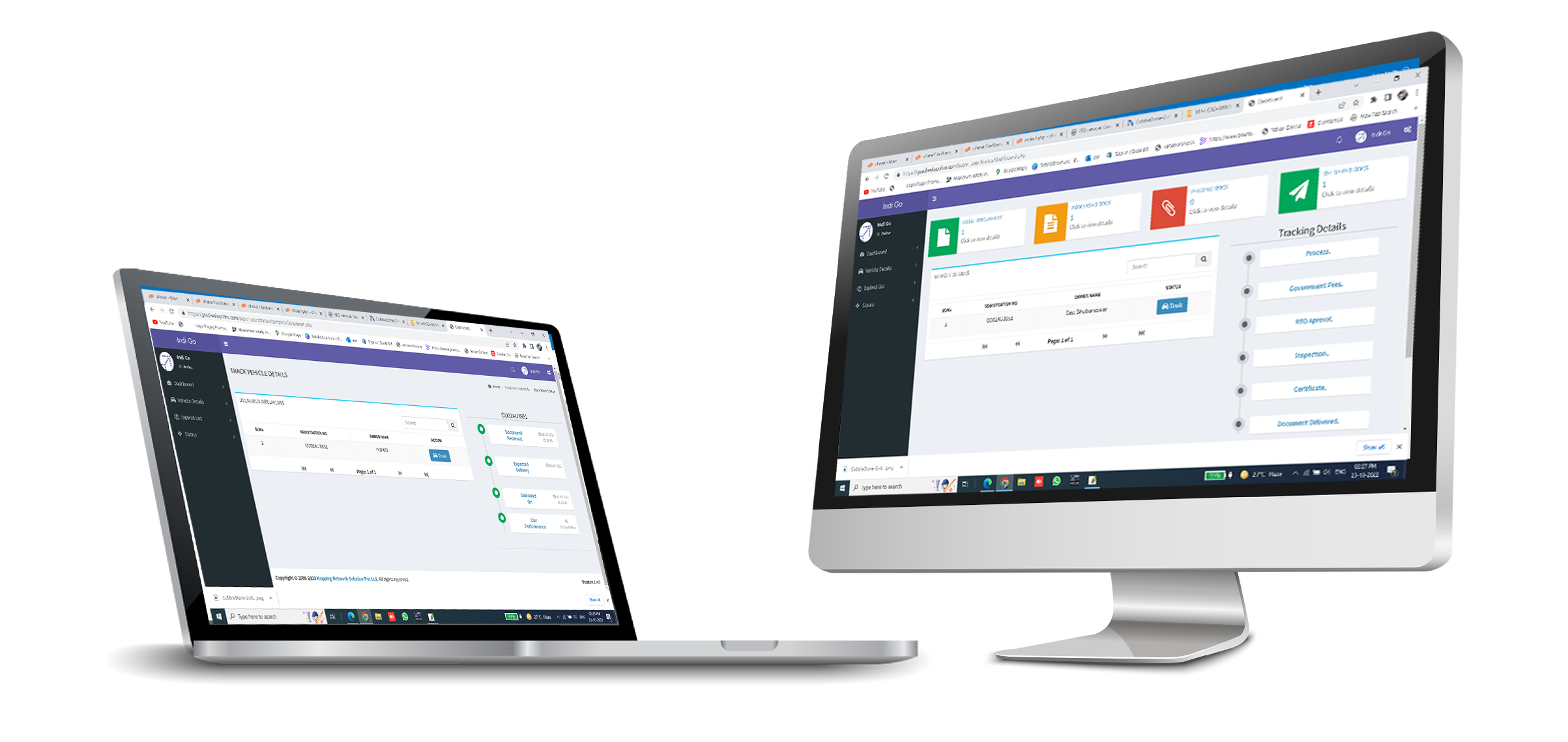VEHICLE REGISTRATION
Registration certificate is an official document that submits as proof that your motor vehicle is registered with the Indian government.

Process and documents for
registration certificate
-
Registering a new vehicle with the Regional Transport Office (RTO) in India is mandatory. Vehicle registration is required to drive it on Indian roads. Vehicle registration means obtaining a unique identification number for the vehicle to differentiate it from others.
Since the RTO regulates all motor vehicles in the country, it is required to get every vehicle registered at the local RTO. The RTO issues the Vehicle Registration Certificate (RC) for every registered vehicle containing a registration number. The vehicle RC is the official document that denotes that a vehicle is registered with the Indian Government.
The registration number of a vehicle issued by the RTO remains unchanged even when it is sold to another person. The RTO provides a permanent registration number to the vehicle owner, which cannot be changed under any circumstance.

-
Vehicle Registration Procedure The vehicle registration can be done by the dealer or owner. In many cases, the dealer applies and obtains the permanent registration number of the vehicle. Sometimes, the dealer may provide a temporary registration when buying the vehicle, and the owner will have to apply for perman ent registration to the local RTO.
Following are the registration procedure for a new vehicle:
Step 1: Visit the local RTO with the new vehicle.
Step 2: Fill the Form 20 and submit it with the required documents to the RTO. Step 3: The RTO superintendent will scrutinise or inspect the application and documents. Step 4: Pay the registration fee and road tax at the cash counter. Step 5: The Inspector of Motor Vehicles (IMV) will inspect the vehicle. Step 6: The RTO will enter the new vehicle data into the central database. Step 7: The RTO superintendent will verify the new vehicle data entered into the database. Step 8: The Assistant Regional Transport Officer (ARTO) will approve the vehicle registration. Step 9: The RTO will deliver the vehicle RC to the applicant by post to the registered address.

-
Documents Required for Vehicle Registration
The vehicle owners must carry the following original documents when they visit the local RTO and apply for vehicle registration:
Filled Form 20 (Application for motor vehicle registration). Sale certificate (Form 21 issued by dealer or manufacturer). Road Worthiness Certificate (Form 22). Vehicle insurance certificate. Passport size photographs. Citizenship proof. Temporary registration assigned by the dealer. Invoice from the dealer. Customs’ Clearance Certificate (when the vehicle is imported). PAN card of the owner when the cost of the vehicle is more than Rs.4 lakh. Pollution Under Control Certificate (PUCC). Form 34 in case of loan hypothecation (if applicable). Proof of residence, such as: Aadhaar card. Voters ID. Ration card. Account statement from a nationalised bank. Registered rent agreement. Utility bills. Identity proof, such as: PAN card. Voters ID. Aadhaar card. Passport. Driving license.

-
Download Form

-
Vehicle Registration Procedure The vehicle registration can be done by the dealer or owner. In many cases, the dealer applies and obtains the permanent registration number of the vehicle. Sometimes, the dealer may provide a temporary registration when buying the vehicle, and the owner will have to apply for perman ent registration to the local RTO.
Following are the registration procedure for a new vehicle:
Step 1: Visit the local RTO with the new vehicle.
Step 2: Fill the Form 20 and submit it with the required documents to the RTO. Step 3: The RTO superintendent will scrutinise or inspect the application and documents. Step 4: Pay the registration fee and road tax at the cash counter. Step 5: The Inspector of Motor Vehicles (IMV) will inspect the vehicle. Step 6: The RTO will enter the new vehicle data into the central database. Step 7: The RTO superintendent will verify the new vehicle data entered into the database. Step 8: The Assistant Regional Transport Officer (ARTO) will approve the vehicle registration. Step 9: The RTO will deliver the vehicle RC to the applicant by post to the registered address.

Solution for Automobile Dealers
-
We have introduced vehicle registration on call services for automobile dealers.
It can be applied for registration certificate for the newly sold vehicles with just a call/filling an online form.
An online platform, to track the whole procedure with just a click.
The vehicle document management dashboard is provided free of cost.
No need to run after middlemen, to get the work done on time, or employ extra workforce just for RTO work.
Services
Vehicle registration
Trade licenses and renewals

Dashboard
Our experts combined the elements of technology and experience together to make your work easy, swift And care-free.

-
Real-time status RTO applied filesIt's easy to navigate and much user-friendly. It's available in web and android in a single click, you can go through your entire RTO applied files status.
Received files: It indicates how many files you have given to the service provider for applying for vehicle fitness or other services.
Process: it indicates the real-time status of the process, such as document received date & time, govt fees, RTO passing,Certification and Document Delivery.
Pending: It indicates the pending status of the documents.
Delivered: It indicates the entire performance of the service provider.
It’s easy to get started. Sign up for free.
Create your account and receive trial credits or get in touch with us
